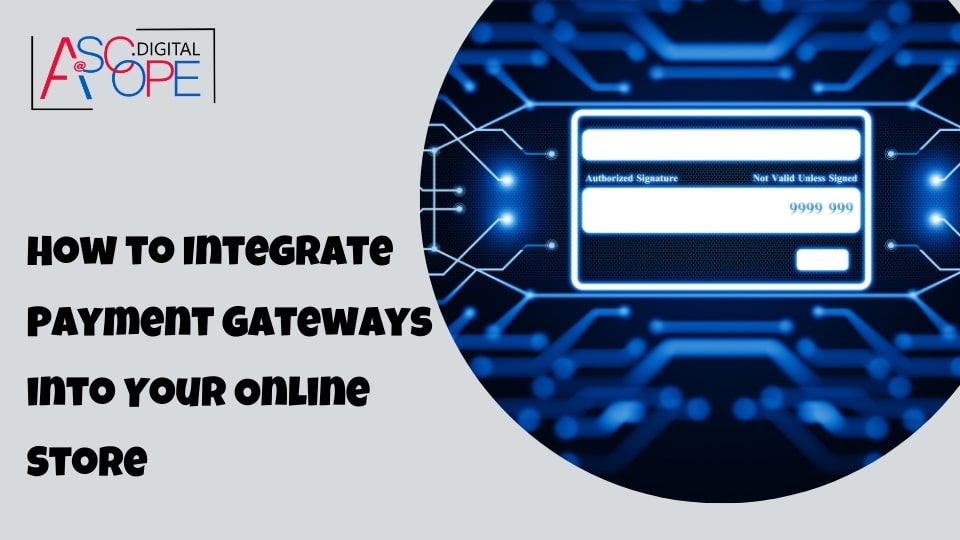The rise of e-commerce has transformed the way we shop and conduct business. A key component of any online store is the ability to process payments securely and efficiently. Integrating a payment gateway into your e-commerce website is a critical step in ensuring that transactions are smooth, secure, and convenient for your customers. This guide will walk you through the process of integrating payment gateways into your online store, providing insights into the various options available and the steps you need to take to implement them effectively.
Understanding Payment Gateways

A payment gateway is a technology that facilitates online transactions by transferring information between a payment portal (such as a website or mobile app) and the bank. Payment gateways play a crucial role in authorizing payments for e-commerce transactions, ensuring that sensitive information is encrypted and transmitted securely.
Choosing the Right Payment Gateway
The first step in integrating a payment gateway into your online store is choosing the right one. There are several factors to consider when selecting a payment gateway:
- Compatibility: Ensure that the payment gateway is compatible with your e-commerce platform. Most major e-commerce platforms like Shopify, WooCommerce, and Magento have integrations with popular payment gateways.
- Security: Security is paramount when it comes to handling payment information. Choose a payment gateway that is PCI DSS compliant and offers robust security features like encryption and fraud detection.
- Transaction Fees: Different payment gateways have different fee structures. Consider the transaction fees, setup fees, and any other costs associated with using the payment gateway.
- Supported Payment Methods: Ensure that the payment gateway supports a wide range of payment methods, including credit/debit cards, digital wallets, and alternative payment options like Apple Pay and Google Pay.
- Customer Experience: A smooth and seamless checkout experience is crucial for reducing cart abandonment. Choose a payment gateway that offers a user-friendly interface and fast processing times.
Popular Payment Gateways
Some of the most popular payment gateways for e-commerce include:
- PayPal: Widely recognized and trusted by consumers, PayPal offers a straightforward integration process and supports a variety of payment methods.
- Stripe: Known for its developer-friendly API and extensive customization options, Stripe is a popular choice for many online businesses.
- Square: Ideal for small businesses, Square provides a simple setup process and competitive transaction fees.
- Authorize.Net: A reliable and established payment gateway that offers advanced security features and support for recurring billing.
Integration Process
Once you’ve chosen a payment gateway, the next step is to integrate it into your online store. The integration process can vary depending on the payment gateway and your e-commerce platform, but the general steps are as follows:
Step 1: Create an Account
First, you’ll need to create an account with the payment gateway provider. This typically involves providing some basic information about your business and verifying your identity.
Step 2: Obtain API Credentials
After setting up your account, you’ll need to obtain API credentials from the payment gateway provider. These credentials will allow your e-commerce platform to communicate with the payment gateway securely.
Step 3: Install the Payment Gateway Plugin
Most e-commerce platforms offer plugins or extensions that make it easy to integrate payment gateways. Install the appropriate plugin for your chosen payment gateway and configure it using the API credentials obtained in the previous step.
Step 4: Configure Payment Settings
Within your e-commerce platform, navigate to the payment settings section and configure the payment gateway. This usually involves entering the API credentials, selecting the supported payment methods, and customizing the checkout experience.
Step 5: Test the Integration
Before going live, it’s crucial to test the payment gateway integration thoroughly. Perform test transactions to ensure that payments are processed correctly and that the checkout process is smooth. Many payment gateways offer sandbox environments for testing purposes.
Step 6: Go Live
Once you’re confident that everything is working correctly, you can go live with your payment gateway. Monitor transactions closely during the initial phase to catch any potential issues early.
Enhancing Security

Security is a top priority when handling online payments. Here are some best practices to enhance the security of your payment gateway integration:
- Use SSL Certificates: Ensure that your website uses SSL (Secure Sockets Layer) certificates to encrypt data transmitted between your server and the customer’s browser.
- PCI Compliance: Follow the Payment Card Industry Data Security Standard (PCI DSS) guidelines to protect cardholder data.
- Enable Fraud Detection: Utilize the fraud detection tools offered by your payment gateway to identify and prevent fraudulent transactions.
- Regularly Update Software: Keep your e-commerce platform and payment gateway plugins up to date to protect against security vulnerabilities.
Optimizing the Checkout Experience
A seamless checkout experience is crucial for maximizing conversions and reducing cart abandonment. Here are some tips to optimize the checkout process:
- Simplify the Checkout Process: Minimize the number of steps required to complete a purchase. A one-page checkout can significantly improve the user experience.
- Guest Checkout: Allow customers to check out as guests without requiring them to create an account.
- Auto-fill Features: Use auto-fill features to make it easier for customers to enter their payment and shipping information.
- Mobile Optimization: Ensure that the checkout process is optimized for mobile devices, as a significant portion of online transactions are conducted on smartphones and tablets.
Improving Traffic and Sales
Integrating a payment gateway into your online store not only facilitates transactions but can also improve traffic and sales. A secure and user-friendly payment process builds trust with your customers, encouraging them to complete their purchases and return for future transactions. Furthermore, offering a variety of payment options caters to a broader audience, increasing the likelihood of conversions.
Thus, improving traffic and sales for your website. Read more on the other reasons why your website isn’t getting traffic. Factors such as SEO, site speed, and user experience play significant roles in attracting and retaining visitors. By addressing these aspects alongside integrating a reliable payment gateway, you can create a comprehensive strategy to boost your online store’s performance.
Conclusion
Integrating a payment gateway into your online store is a critical step in setting up a successful e-commerce business. By choosing the right payment gateway, following best practices for security, and optimizing the checkout experience, you can ensure a smooth and secure transaction process for your customers. This, in turn, can lead to increased traffic and sales for your online store. Remember to continually monitor and improve your payment process to keep up with evolving customer expectations and technological advancements.
By following the steps outlined in this guide, you’ll be well on your way to creating a seamless and secure payment experience for your customers, setting the foundation for long-term success in the competitive world of e-commerce.


